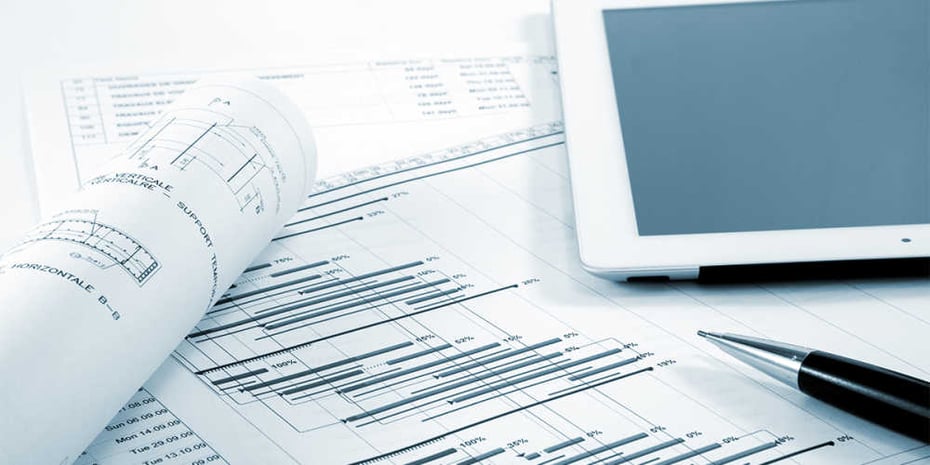Streamline Your Process: Construction Document Management Made Easy
Wiki Article
Enhancing Process Effectiveness: Designer's Expert Strategies for Construction Document Monitoring
In the realm of building layout and building and construction, the thorough administration of files stands as a cornerstone for task success. These strategies not just make sure smooth project development but likewise hold the crucial to unlocking enhanced performance and accuracy in the elaborate realm of building and construction file monitoring.Secret File Organization Methods
When taking care of building records, among the essential strategies that engineers use is establishing a systematic and reliable organization system. This system commonly entails categorizing files based on their type, such as drawings, specifications, contracts, and allows. By developing clear and unique groups, architects can promptly find specific info when required, conserving time and reducing errors in the building and construction process.Within each group, designers further arrange files by creating subfolders or using numbering systems to signify variations or modifications (construction document management). This hierarchical structure makes sure that the most pertinent and current information is conveniently accessible while preserving a document of changes made throughout the task timeline
In addition, engineers usually use digital record administration systems that provide functions like keyword search features, version control, and access restrictions to boost organization and collaboration among job stakeholders. These devices improve the document retrieval process, advertise real-time updates, and assist in seamless communication, inevitably adding to the general success of the building task.
Collaborative Platform Combination
To maximize file monitoring efficiency in construction projects, engineers effortlessly incorporate joint systems to enhance interaction and simplify sychronisation amongst project stakeholders. By leveraging collective platforms such as task management software, cloud-based storage systems, and communication devices, designers can create a central center for all project-related records and communication networks. These systems allow staff member to access, evaluation, and team up on files in real-time, decreasing hold-ups and the threat of errors related to traditional file administration approaches.Collective system assimilation likewise cultivates openness and accountability within the task team, as all stakeholders have visibility into the latest task updates and alterations. By systematizing interaction and document sharing, architects can ensure that all group members are functioning from the most current info, lessening the possibilities of problems or misunderstandings developing due to obsolete records.
Moreover, collaborative platforms enable smooth partnership between architects, service providers, clients, and other task stakeholders, advertising an extra efficient and natural task workflow. By damaging down communication barriers and helping with information exchange, designers can drive productivity and advancement in building and construction jobs, inevitably bring about effective project outcomes.
Version Control Finest Practices
Executing reliable version control methods is crucial for preserving file precision and uniformity in construction projects. By establishing a clear system for official source managing alterations, job teams can make certain that every person is functioning from the most updated documentation, decreasing the danger of mistakes and disparities throughout the building phase.Among the essential best practices for version control is to appoint one-of-a-kind identifiers per record variation. This can be accomplished by utilizing a numbering system or day stamp that clearly suggests the order of modifications. By clearly labeling each iteration, employee can easily track the progression of the record and recognize the most recent variation.

Automation Tools for Performance

Record control software application, like Procore or PlanGrid, centralizes job documentation, making it conveniently available to all stakeholders. These systems permit real-time partnership, variation control, and automated back-ups, guarding against information loss. In Addition, Structure Information Modeling (BIM) software automates the generation of building drawings and makes certain that modifications are synchronized across all related documents.
Integrating automation devices with cloud storage space solutions further boosts ease of access and safety. By automating the document management her explanation process, task groups can focus their time and initiative on value-adding tasks, ultimately improving efficiency and project end results.
Secure Information Administration Solutions
Effectively handling and safeguarding task information is paramount in the building sector to guarantee discretion and honesty throughout the project lifecycle. Safe information administration services play a vital duty in safeguarding delicate information from unapproved gain access to or violations. Building firms can utilize encrypted cloud storage space solutions to firmly store and share task files with licensed personnel. Executing access controls, such as customer authentication and consent setups, ensures that only accredited people can view or customize sensitive information.Additionally, making use of digital legal rights management (DRM) devices adds an extra layer of protection by preventing the unauthorized distribution or replication of project papers. Regular data back-ups are necessary to reduce the danger of information loss due to unexpected situations like equipment failures or cyber-attacks. Collaborative systems with built-in safety and security features make it possible for smooth interaction and documents sharing amongst project group participants while maintaining data stability.
Final Thought
In conclusion, executing vital file organization techniques, incorporating joint platforms, exercising variation control ideal techniques, making use of automation tools, and embracing protected data management solutions are necessary approaches for improving workflow performance in construction document management. These skilled strategies can enhance processes, boost communication, ensure precision, and keep data protection throughout the building project lifecycle.In the realm of building design and building, the thorough monitoring of records stands as a cornerstone for project success. These methods not just make certain smooth project progression but also hold the crucial to unlocking enhanced efficiency and precision in the elaborate realm of building and construction document management.
To maximize record management effectiveness in building and construction jobs, architects seamlessly integrate collaborative platforms to improve communication and simplify coordination among task stakeholders. These platforms allow group participants to gain access to, review, and work together on papers in real-time, minimizing delays and the danger of mistakes linked with conventional document monitoring methods.
Using automation tools in building record management dramatically boosts performance and simplifies processes for job groups. construction document management.
Report this wiki page